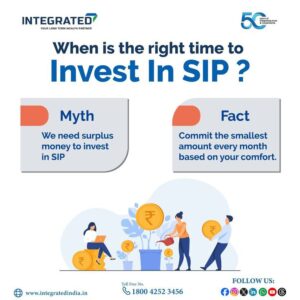What is SIP and How to Start SIP Investment (2025 Guide)
Tired of Not Knowing Where Your Money Goes Each Month?
Ever feel like your hard-earned money disappears faster than you can say “savings”? You’re not alone. For most people, managing finances feels like navigating a maze. That’s where SIP comes in—a beginner-friendly way to build long-term wealth.

What is SIP? (Explained in Plain English)
SIP = Smart Monthly Investing
SIP stands for Systematic Investment Plan. It’s a method of investing a fixed amount of money regularly (usually monthly) into a mutual fund.
Why SIP Makes Sense (Especially in 2025)
- Low Entry Barrier: Start with as little as ₹500/month
- Disciplined Investing: Builds a consistent habit
- Power of Compounding: Earns more the earlier you start
- Rupee Cost Averaging: Minimizes market volatility

How Does SIP Work?
Example: You invest ₹2,000/month into a mutual fund via SIP.
- Money is auto-debited every month
- You buy units based on current market price (NAV)
- The investment grows as the fund’s value increases
- You earn through capital appreciation and dividends
How to Start a SIP Investment in 2025 (Step-by-Step)
Step 1: Set Your Goal
- Buying a house
- Saving for education
- Planning for retirement
- Achieving financial independence
Step 2: Choose the Right Mutual Fund
Pick based on:
- Past 5–10 year returns
- Fund manager’s reputation
- Fund category (Equity, Debt, Hybrid)
- Your risk tolerance
Recommended fund types:
- Large-cap equity funds
- ELSS for tax savings (Section 80C)
- Balanced or hybrid funds for beginners
Step 3: Pick a Platform or AMC
- Mutual fund websites (e.g., HDFC, SBI, ICICI)
- Online platforms like Groww, Zerodha Coin, Paytm Money, Kuvera
Step 4: Complete KYC (Know Your Customer)
- PAN card
- Aadhaar card
- Bank account details
- Selfie or video verification (if online)
Step 5: Start Your SIP
- Select your fund
- Enter SIP amount
- Pick a debit date
- Set auto-debit
Real-World Example: My SIP Journey
I started with ₹1,000/month in a balanced fund in 2018. Today, I’ve built a diversified SIP portfolio without worrying about daily market fluctuations. The key? Consistency.

Common SIP Mistakes to Avoid
- Stopping SIPs during market dips
- Never reviewing performance
- Investing without clear goals
Final Thoughts: SIP is Not Just an Investment, It’s a Habit
SIP is simple, flexible, and powerful. It’s the easiest way to grow your wealth while you live your life—no constant monitoring needed.
Ready to Start Your SIP Journey?
If this post helped you, share it with someone who needs to start investing. Have questions? Drop them in the comments below. Want personalized SIP suggestions? I’d be happy to help!

